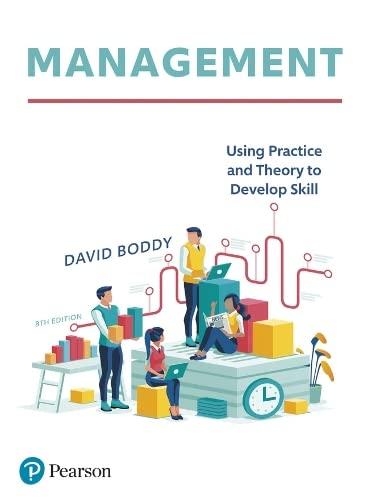Question
4) Transformed Resources are: a) The resources that are converted after the manufacturing process. b) The resources that are used as capital in the transformation
4) Transformed Resources are:
a) The resources that are converted after the manufacturing process.
b) The resources that are used as capital in the transformation process.
c) The resources that are sold, usually a mixture of materials, information and customers.
d) The resources that are treated transformed or converted in a process, usually a mixture of materials, information and customers.
13) _____________ may result in the possible loss of customers.
a) Lead Strategy
b) Lag Strategy
c) Production Strategy
d) Match Strategy
24) Inventory that is used to cope with seasonal demand is known as;
a) De-coupling inventory.
b) Buffer inventory
c) Anticipation inventory
d) Matching inventory
21) What are the 3 basic reasons for keeping an inventory?
a) Time, Certainty, Production
b) Time, Uncertainty, Economies of Scale
c) Time, Certainly, Economies
d) Time, Uncertain decisions, Processes
5) Facilities (the buildings, equipment and plant of an operation) and staff are:
a) Transformed Resources
b) Transformative Resources
c) Transforming Resources
d) Transformer Resources
23) Cycle inventory occurs because one or more ___________ in the process cannot supply all the items it produces simultaneously.
a) Companies
b) Stages
c) Grades
d) Managers
20) The stored accumulation of material resources in a transformation system is the definition of
a) Inventory Management
b) Marketing Management
c) Productivity Management
d) Logistical Management
17) Why is Quality important?
a) Image down
b) Service costs up
c) Productivity down
d) All of the above
e) None of the above
18) What are some of the eight Quality Management Principles by Deming?
a) Factual approach to decision making
b) Mutually beneficial supplier relationship
c) Leadership
d) All of the above
e) None of the above
11) Lead strategy, lag strategy and match strategy are:
a) HRM Strategies.
b) Training for manufacturing workers.
c) Capacity Planning Strategies.
d) Marketing Strategies.
25) Damage, deterioration, storage costs and obsoleting are;
a) Disadvantages of storing inventory
b) Advantages of storing inventory
c) Disadvantages of producing inventory
d) Advantages of producing inventory
2) __________ is a control system for a process or plant, wherein control elements are distributed throughout the system.
a) Control and Distribution System
b) Single Control System
c) Dual Control System
d) User Generated System
16) Adding capacity only after the organization is running at full capacity is the strategy of
a) Lag Strategy
b) Lead Strategy
c) Production Strategy
d) Match Strategy
28) Recruitment & selection, employee relations, training & development, reward management are a part of;
a) Logistics
b) Human Resource Management
c) Marketing
d) Manufacturing
29) __________ help to improve the effectiveness of efficiency of _________ activities.
a) Support, Primary
b) Primary, Support
c) Inbound, Outbound
d) Outbound, Inbound
Step by Step Solution
There are 3 Steps involved in it
Step: 1

Get Instant Access to Expert-Tailored Solutions
See step-by-step solutions with expert insights and AI powered tools for academic success
Step: 2

Step: 3

Ace Your Homework with AI
Get the answers you need in no time with our AI-driven, step-by-step assistance
Get Started


